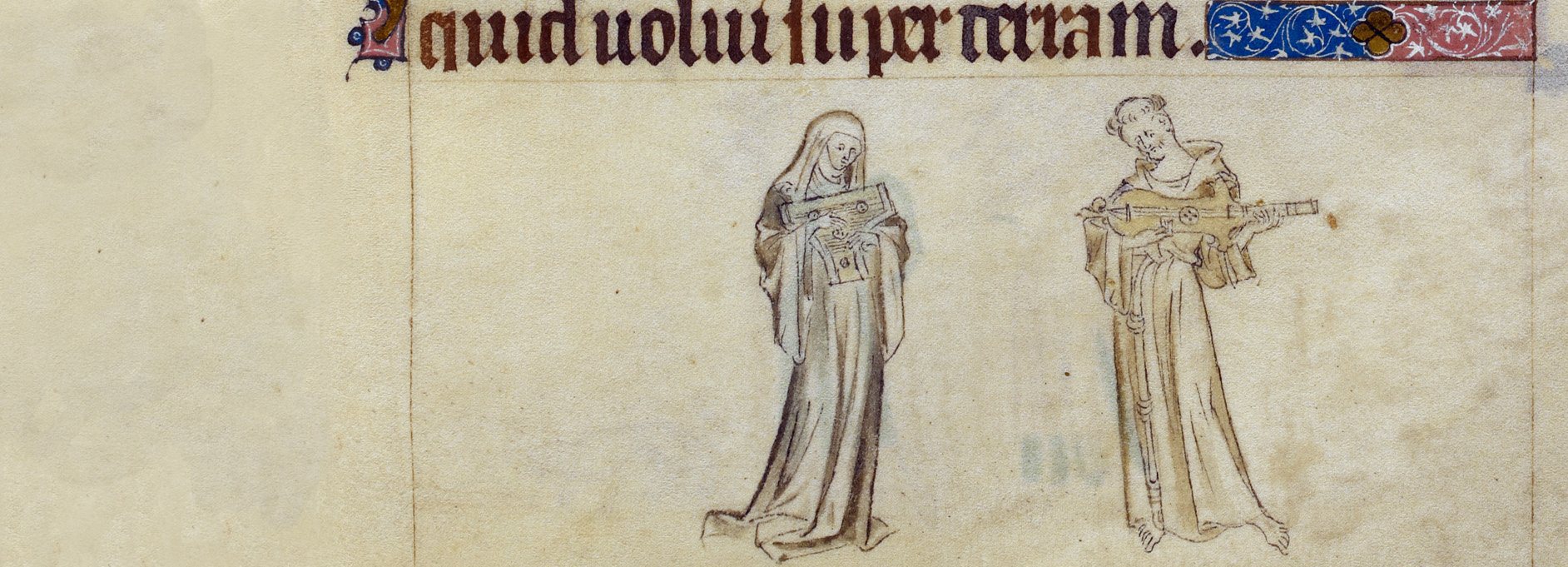An Introduction to RECIRC: The Reception and Circulation of Early Modern Women’s Writing, 1550-1700
- Detalls
- Publicat el Dimarts, 14 Novembre 2017 11:01
- Escrit per Bronagh Ann McShane (Post-doctoral Researcher, WP1: Transnational Religious Networks, RECIRC (T: @BA_McShane))
The RECIRC project is one of the largest digital humanities projects in Ireland. Funded by the European Research Council, the project has its home at the National University of Ireland, Galway, located on the west coast of Ireland, where it is led by Professor Marie-Louise Coolahan. It began in 2014 and is currently in year three of what is a five year project. Currently the team consists of three post-doctoral researchers and two affiliated PhD students; although at its height between 2015 and 2016 the team comprised ten members.
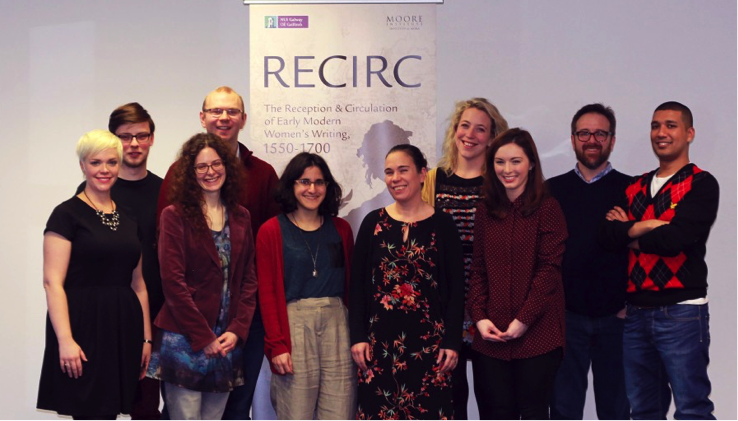
The project is fundamentally an evaluation of how women’s writing was received and circulated in the early modern English-speaking world.
The key questions its asking are:
• How did texts by women circulate?
• Which female authors were read?
• How did women build reputations as writers in the early modern period?
The project’s scope incorporates female writers whose works were read or circulated in Britain and Ireland during the early modern period. Thus RECIRC is not solely limited to authors who wrote in English; we’re also interested in continental European authors whose works were read or received in the English-speaking world. For example, the Life of the Spanish Carmelite and mystic Teresa of Avila which was translated into English in 1642 by the English courtier and author, Tobie Matthew (1577-1655).
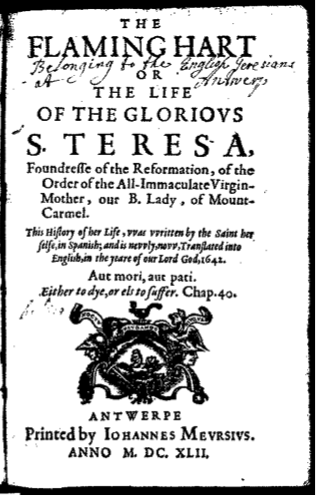
The RECIRC project is organised into four interlocking work-packages:
• Work Package 1; ‘Transnational Religious Networks’ - investigates the reception and circulation of women’s writing within and between English convents that were founded on the Continent during the seventeenth century.
• Work Package 2; ‘The International Republic of Letters’ - analyses the international republic of letters as a locus for the circulation of texts by women.
• Work Package 3; ‘The Manuscript Miscellany’ - addresses the reception of women’s writing in early modern manuscript culture; and finally
• Work Package 4; ‘Book/Manuscript Ownership’ - maps the transmission of female-authored texts by focusing on early modern library catalogues.
The data:
The first two and a half years of the project was dedicated to data-gathering. During this time the RECIRC team visited more than twelve libraries and archives spread across no less than six different countries gathering reception evidence. That data was subsequently entered into a custom-built online database, designed in collaboration with David Kelly, research technologist affiliated to the project.
In designing the online RECIRC database (intended for public access at the project’s close), we devised a taxonomy of reception, categories that run from adaptation through to translation, all explicitly defined.
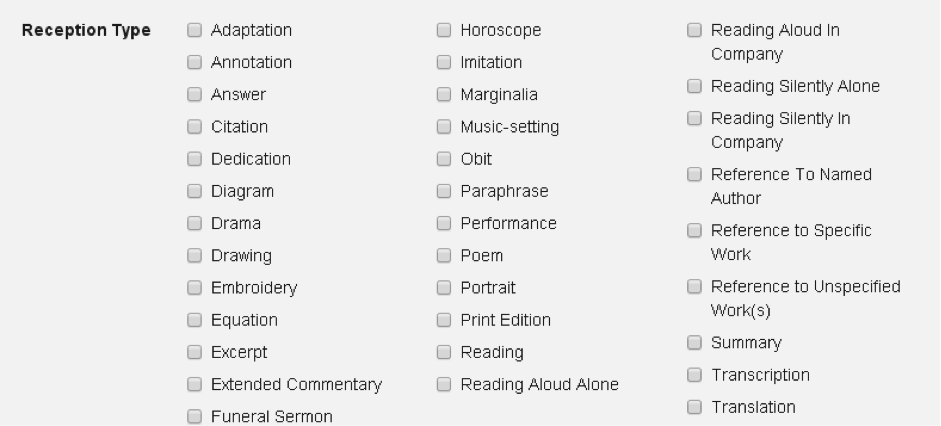
We define reception as a record of engagement with a female author and/or her work.1 For example, in his large-scale martyrology composed between 1707 and 1711, the English Benedictine monk, Ralph Weldon, referred to the ‘several books of Collections’ and ‘spiritual Songs’ written by Anne Cary, in religion Sr Clementia, (1615-26). Anne Cary professed at the English Benedictine convent in Cambrai, Spanish Flanders in 1640 and was later instrumental in establishing a sister house of English Benedictine nuns at Paris. She is just one of 182 female authors in our database who are nuns.
Weldon’s martyrology is just one example of the kind of material the RECIRC team has been mining in order to understand what prompted women to write, and how such texts were read and circulated. The by-product of this kind of research is the discovery of new texts; without Weldon’s chronicling activities, we would not know about these works by Anne Cary or other English Benedictine nuns (you can read more about the reception of Anne Cary’s work by Weldon here).
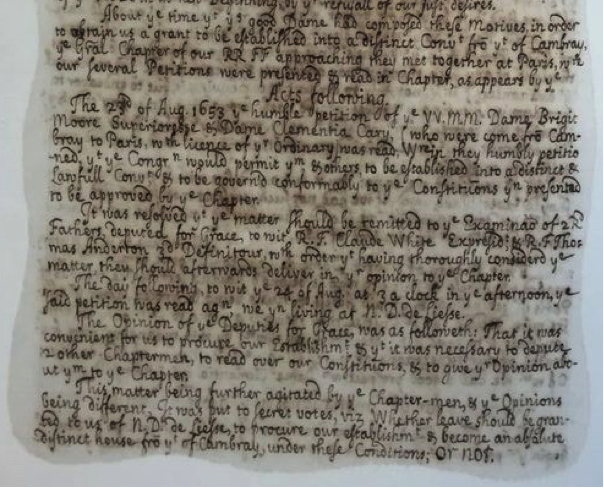
During the data gathering phase of the project we’ve amassed a lot of data — we currently have 4,452 examples of the reception or circulation of a female author and/or her work. Our mid-term period was dedicated to data-cleaning to ensure accuracy across the board. Now we’re turning our attention to data analysis!
The analysis:
Over the past six months, the team have been testing out various digital tools in order to analyse and visualise the data we’ve gathered thus far. One method I’ve been experimenting with for Work Package 1 data is network analysis. What do I mean when I say network analysis and what is a network?
A network, in the most abstract sense, is a collection of something you’ve defined as nodes (for example, people) that are connected by relationships or associations of some kind (known as ‘edges’). In a correspondence network, for example, the nodes are people and the edges are letters exchanged between them. Once you’ve represented any real world scenario – whether current or historical – in terms of nodes and edges you can then take a whole range of mathematical tools from the field of network analysis to analyse the properties of these nodes and edges.
While network analysis tools have long been used in disciplines such as sociology, mathematics and physics, they are only recently making an impact in the disciplines of English and History.2 Three scholars who have been leading the way in terms of applying network analysis tools to early modern sources are Ruth and Sebastian Ahnert3 and Evan Bourke4 (Evan is one of the PhD students affiliated to the RECIRC project).
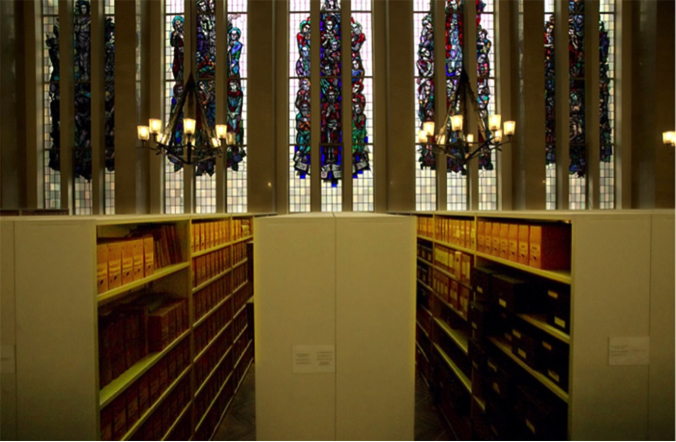
Studies such as theirs have demonstrated the value of using network analysis tools especially when dealing with large data-sets as they allow you to take a step back, look at the archive as a whole and find over-arching trends or areas that have perhaps been overlooked by traditional scholarship.
In applying network analysis tools to WP1 data, I have focused initially on a large body of correspondence composed by members of the English Benedictine convent in Brussels, founded in 1598 by Lady Mary Percy (c.1570-1642). These letters, which are now held in the archive of the archdiocese of Mechelen in Belgium were written by members of the Brussels community to the archbishops of Mechelen and their secretaries.
From this collection of correspondence the RECIRC database holds records on 353 letters spanning a 64-year period between 1609 and 1673. The data gathered from these 353 letters has in turn generated 1,024 instances of reception.
My application of network analysis to WP1 data is at a very early stage. Initial results are intriguing for what they reveal about the number and variety of people within the Brussels community correspondence network and hence how widely the nuns’ writing was circulated. Furthermore, the prominence of collaborative authorship within the epistolary culture of the Brussels convent is another compelling finding which requires further probing. Watch this space!
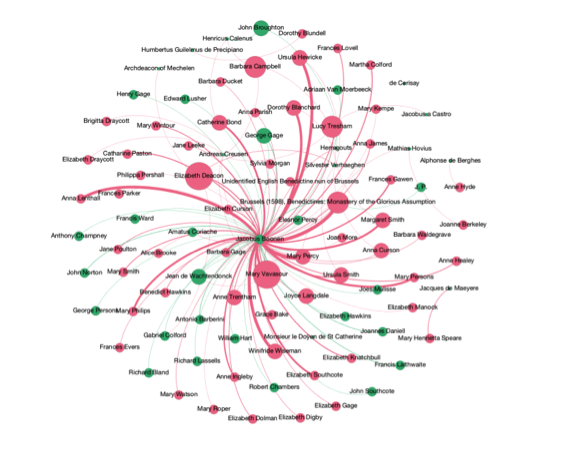
You can follow the project on Twitter (@RECIRC_) or join our mailing list by visiting our website.
1 RECIRC Database Manual, p. 8.
2 Just last month (October 2017) saw the launch of the Journal of Historical Network Research, a new journal dedicated to promoting research that combines historical research and network analysis.
3 Ruth Ahnert and Sebastian E. Ahnert, ‘Protestant Letter Networks in the Reign of Mary I: A Quantitative Approach’, English Literary History (2015); Ruth Ahnert, ‘Maps Versus Networks’ in Noah Moxham and Joad Raymond (eds), News Networks in Early Modern Europe (Brill, 2016), 131-157; Ruth Ahnert and Sebastian E. Ahnert, ‘Reconstructing Correspondence Networks in the State Papers Archive’, unpublished paper delivered at ‘Reception, Reputation and Circulation’ international conference held at the National University of Ireland, Galway in March 2017: a podcast of the paper is available here.
4 Evan Bourke, ‘Female Involvement, Membership and Centrality: A Social Network Analysis of the Hartlib Circle’, Literature Compass (2017); available (by subscription) at: http://onlinelibrary.wiley.com/doi/10.1111/lic3.12388/full.
Bronagh Ann McShane



